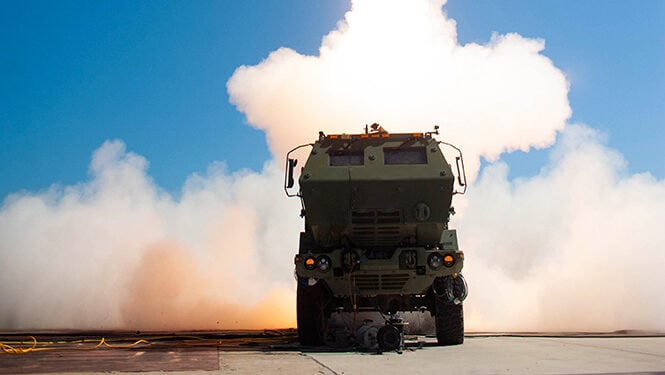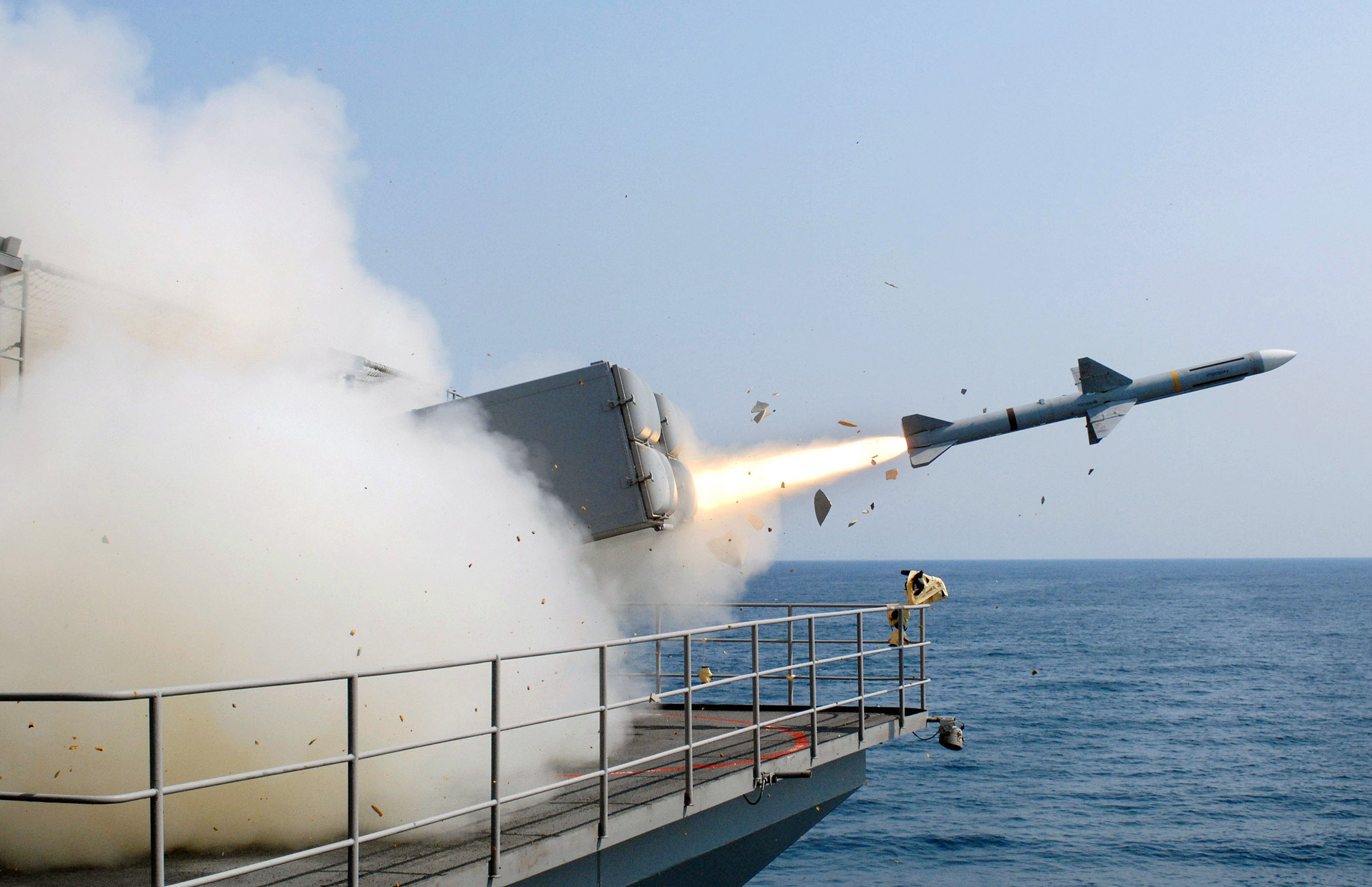A photo from a previous PrSM flight test (US Army)
WASHINGTON — When the US Army unveiled its fiscal 2025 budget request earlier this week, the big news revolved around the termination of a new artillery launcher and reshuffling dollars for its aviation portfolio. But budget documents and officials have detailed other notable changes coming to acquisition plans for America’s land forces.
That includes work on a new start air defense prototype, delaying production on ship-targeting missiles, and increased funding for a more aggressive Abrams tank upgrade.
Here’s a look at just a few of the program changes Army leaders’ detail in their budgeting plans:
Drone Hunting
Air defense continues to be a hot topic for all the services, and the Army has released prototyping plans for a new Multi-Domain Artillery Cannon System (MDACS) that builds off Air Force Research Laboratory and Strategic Capabilities Office investments.
The Army envisions its prototype will include a multi-domain artillery cannon, multi-function precision radar, multi-domain battle manager, hypervelocity projectiles, and an ammo handler vehicle.
“MDACS complements existing [air and missile defense] systems and provides integrated and standalone defense against a broad range of threats,” budget justification documents said. “MDACS will provide the Joint Force with defense of fixed and semi-fixed sites against cruise missiles and unmanned aircraft systems while significantly increasing magazine depth and reducing cost-per-engagement.”
The plan, according to budget documents, is to spend just under $67 million in FY25 to kick off the initiative, before boosting those development dollars up to $279 million in FY26 and $301 million in FY27.
“Throughout the developmental effort, soldier touchpoints will gather feedback for Army requirements generation and prototype maturation,” the service wrote. “MDACS will use the Integrated Battle Command System (IBCS) and conduct a series of flight tests culminating in a battery-level operational assessment in FY 2028.”
After that 2028 assessment, the service will determine if it has an “enduring capability requirement,” and, if so, that decision will guide future acquisition activities and MDACS fielding plans.
Seeker Challenges
The Army is planning to field its baseline Precision Strike Missile (PrSM) this year, which it dubs Increment 1 (Inc 1). That new weapon is designed to be fired from the M142 High Mobility Artillery Rocket System (HIMARS) and the M270A2 Multiple Launch Rocket System (MLRS), and strike targets 500 kilometers away — a distance greater than the legacy Army Tactical Missile System’s (ATACMS) 70-300 kilometer range PrSM is set to replace. (The service hasn’t disclosed if it will in fact hit that range.)
RELATED: Army inching closer to PrSM fielding with ‘successful’ qualification test flight
It also pursuing a host of upgrades to that baseline weapon including:
- PrSM Inc 2 with a multimode seeker, known as the Land-Based Anti-Ship Missile (LBASM) seeker, to enable the missile to strike maritime targets
- PrSM Ic 3 with enhanced lethality payloads
- PrSM Inc 4 designed to fly more than 1,000 kilometers
The service had planned to move PrSM Inc 2 into production in FY25, but there have been development delays tied to the seeker pushing it back to FY26, according to Maj. Gen. Joe Hilbert, the director of force development.
“The bottom line is that technology was not ready, not mature enough, to go into procurement in ‘25,” he told reporters on Tuesday.
To get there, the service is spending this year continuing integration work between the missile and seeker, including an initial design review and PrSM Inc 2 demonstration flight testing beginning in the July to September timeframe, according to budget justification documents. Flight testing will continue into FY25, including against maritime targets.
By the end of that year, the Army is slated to make a production decision and award a contract to begin receiving the enhanced weapon FY27. If the plan stays on track, soldiers are slated to have an early operational capability by FY28, or about a year later than anticipated.
Tank For The Upgrades
Last year Army leaders upended plans for incremental M1 Abrams tank upgrades when it announced it would not pursue the Abrams System Enhancement Package version 4 (SEPv). Instead, officials said, the goal is to work on a more ambitious overhaul, dubbed the M1E3, and find ways to reduce the tank’s weight and logistics burden while also enhancing its protection.
New budget documents detail initial plans to ramp up development spending on the initiative next year, as part of an engineering change proposal that keeps General Dynamics Land Systems as the prime contractor but opens up windows of competition for subsystems.
Those documents outline service plans to spend this year investigating, maturing and demonstrating “candidate technology options” and will continue doing so in 2025.
However, the Army hopes to have the funding in place in FY25 to move out on its Abrams tank improvement program and is requesting $246 million for FY25 — more than a 255 percent hike over its $96 million request for this year. Then in FY26, the service wants to boost that figure up to $366 million, before spending $179 million for development in FY27 and $148.5 million in FY28.
IVAS Next
Army budget documents do not paint a complete picture of service plans for its beleaguered Integrated Visual Augmentation System (IVAS) program centered around a militarized version of Microsoft’s HoloLens 2 heads-up (HUD).
However, FY25 budget justification documents do note a couple of program items, including a jump in the overall ask related to the headset, evolving price points and the launch of what the Army is calling “IVAS Next” development, though it doesn’t detail what that initiative will look like.
The growing IVAS per unit price point has been a program focal point, with the 1.0 version settling in around $46,000 and the service projecting that each 1.1 unit would cost $62,000.
For FY25, the Army is asking lawmakers for $255.5 million to purchase 3,162 units next year, with each one costing $81,000 — a number that the document says elsewhere includes program management costs, software enhancements and more. However, the actual per unit cost could drop down to $42,000 by the time the Army signs a modified deal with Microsoft in June 2025, it later adds.
Just which price point the service and Microsoft settle on could be swayed by a host of factors including operational test results, how many units the Army wants and what the Army has in mind for IVAS Next development.
Program officials have hosted been hosting industry meetups designed to explore the state of mixed-reality technology over the past year and discuss broader IVAS capability challenges. One set of slides from September 2023 [PDF], for example, cites issues with display performance, dynamic occlusion for mixed-reality training, and size, weight and power.
RELATED: Army’s pricey IVAS goggles meet a training obstacle: Doors
To date, though, the service has not detailed just what IVAS Next plans will look like — whether it’s continued work with Microsoft, a new hunt for a HUD or something else. Regardless, it’s moving forward if the Army gets its way in 2025 and cites that initiation as the reason for IVAS development coffers jumping from $89.5 million in FY24 up to $255.5 million in FY25.





















Discussion about this post